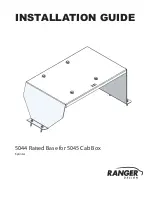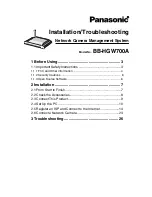
5
Now you’ll connect the arms to the bottom shell and bottom plate using the
longer screws. Align the two holes in each arm with the holes in the plate
and shell, and insert the screws from outside the bottom shell. Be careful not
to damage the external USB module and plate it carefully above the plate.
This image shows the correct orientation of the cables after attaching the
arms. (LED cable not pictured.)
To attach the top plate, you’ll need to ensure the correct arrangement of the cables before you
glue on the foam. The cables that you threaded up from the previous step (four-wire white cable,
the gimbal cable, and the single-wire black cable), the USB module cable, and the LED cable
need to be oriented so they can connect to Pixhawk. When you attach the top plate, make sure
to thread the cables through the slots in the side of the plate: route the LED cable between the
foam and the arm and up through the slot in the plate closest to the I2C splitter (cable routing not
pictured), route the gimbal cable through this same slot, and route the other cables through the
slot of the other side of the Pixhawk. Ensure that all cables are clear of the areas on the bottom
plate where the foam will attach to the top plate.
When you’re ready to attach the top plate, add glue to the places on the bottom plate where the
foam was detached, and add the top plate. Apply pressure to set the glue, and remember to
arrange the cables as you place the top plate.
Attach the top plate to the arms using the four small screws for each arm.
Now you’re ready to start reconnecting the cables to Pixhawk. Connect the POWER and USB
cables from the group that you feed up from the previous step. Reattach the telemetry radio
using the three plastic screws, ensuring that you don’t apply too much pressure to the screws
that might cause them to strip, and connect the cable to the TELEM port.
Connect the cable from the LED module to the I2C splitter.
Examine the white four-wire cable. The connector has a small triangle at the position of one of
the wires: this is wire 1. Connect this cable to the MAIN OUT signal ( s ) pins 1-4 with wire 1
connecting to 1. This is critical for your IRIS to fly correctly.
Connect the black single-wire cable to the MAIN OUT ground ( - ) 1 pin. On the gimbal cable,
connect the orange wire to the AUX OUT signal ( s ) 1 pin and the brown wire to the AUX OUT
ground ( - ) 1 pin. Leave the red wire unconnected.


























